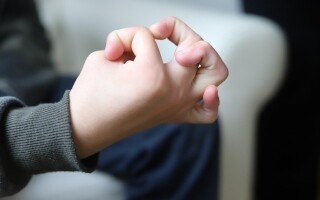
Experts in health warn that the ability to easily bend fingers or stretch one's hand beyond the natural range of motion may indicate a problem with breathing in children. Dr. Taylor Goldberg, a specialist in orthopedic correction of the spine from Colorado, noted that excessive flexibility may signify weakness or instability of connective tissue in the organism.
Connective tissue, such as cartilage and ligaments, acts as a "glue" for the body, providing support and structure for bones, muscles, and organs. It is especially important for children, as it helps ensure functional support, and, unlike other organs, connective tissue constitutes about 25% of the weight of children.
Temporary weakening of connective tissue in children may affect pulmonary mechanisms and stability of airflow, which may lead to serious breathing problems, such as asthma and obstructive apnea during sleep.
One of the tests involved a single eye for the ability to perform a series of movements, including bending the knee backward at 90 degrees, touching a large toe to the floor with the sole straight, hyperextending the joints of the feet or elbows by more than 10 degrees, and bending the wrist flat to the floor with straight elbows. In adults, results exceeding five out of nine indicate excessive flexibility, whereas in children it should be no less than six out of nine.
For a small number of these individuals, their flexibility is conditioned by a syndrome known as Ehlers-Danlos syndrome (EDS). Dr. Goldberg warned: "Similarly, many people suffering from Ehlers-Danlos syndrome experience greater difficulties in recovering from respiratory infections."
She added in her interview for Newsweek magazine: "While we need more official studies, clinical experience shows that people with Ehlers-Danlos syndrome may face significant challenges in coping with respiratory infections compared to the general population."
Connective tissue mainly consists of collagen and elastin, both of which are responsible for providing strength and resilience to the organism.













